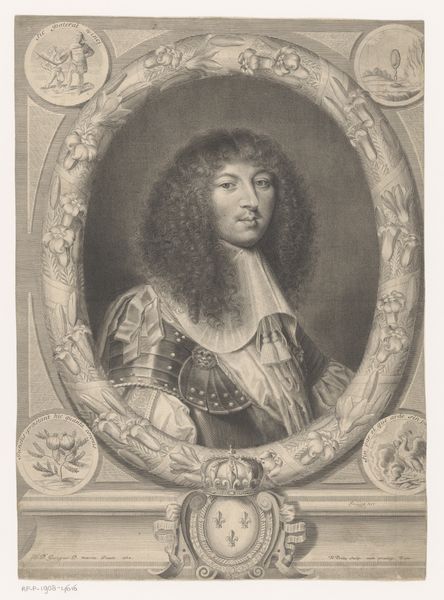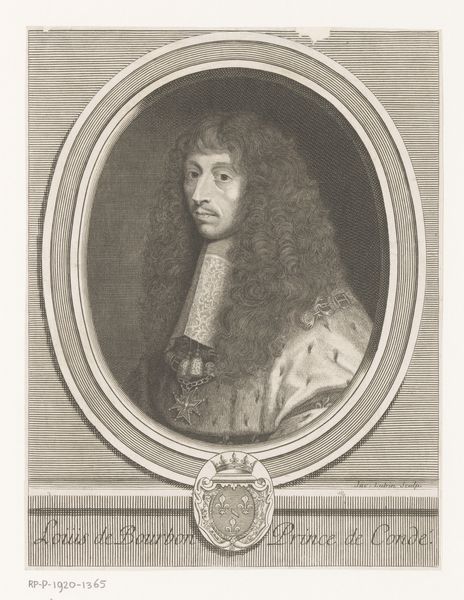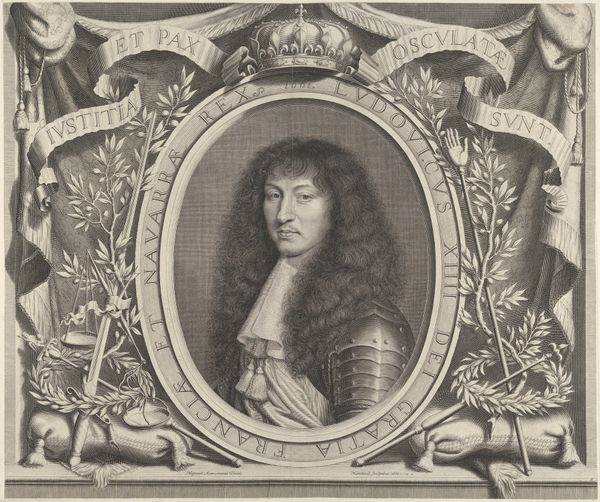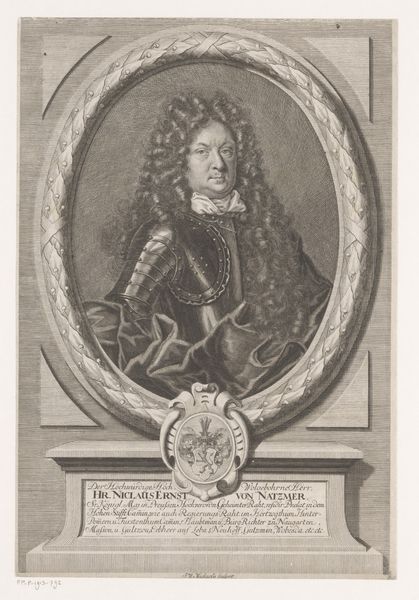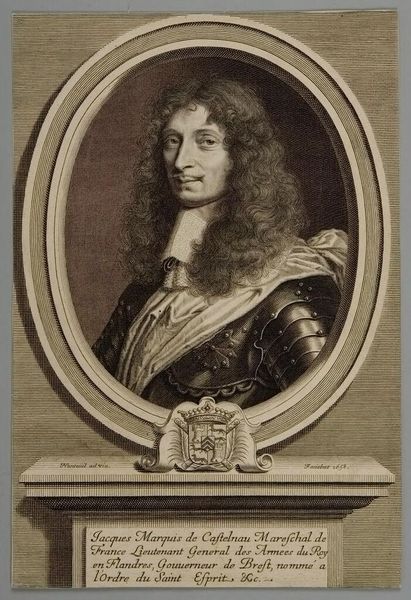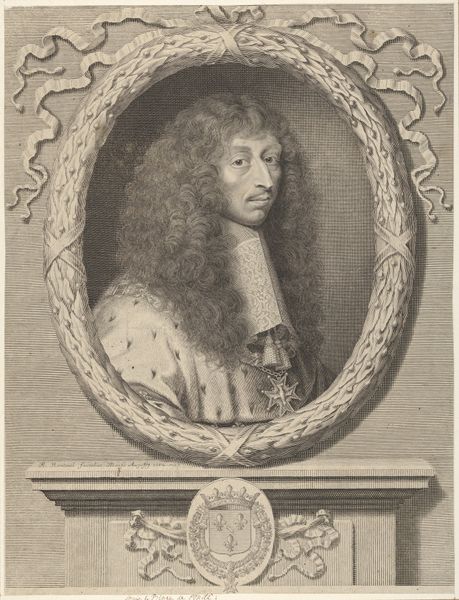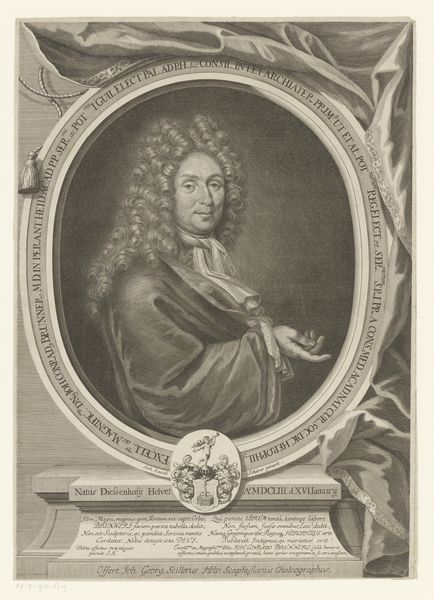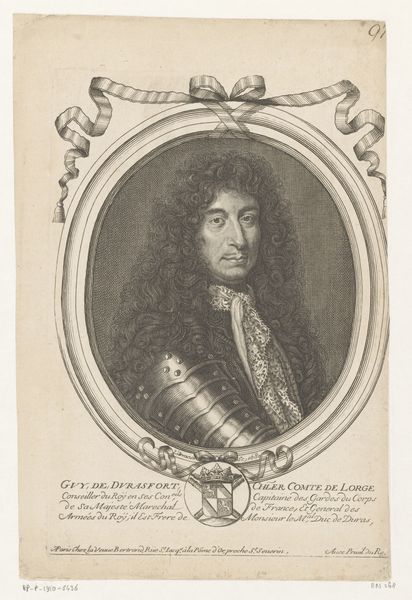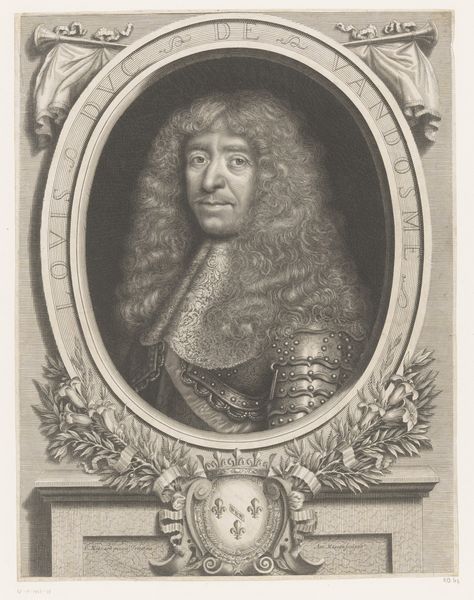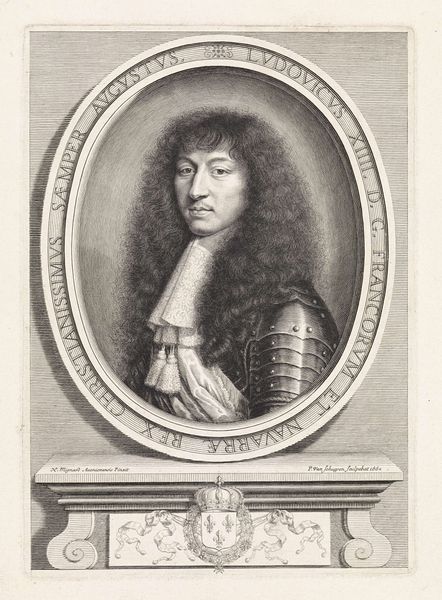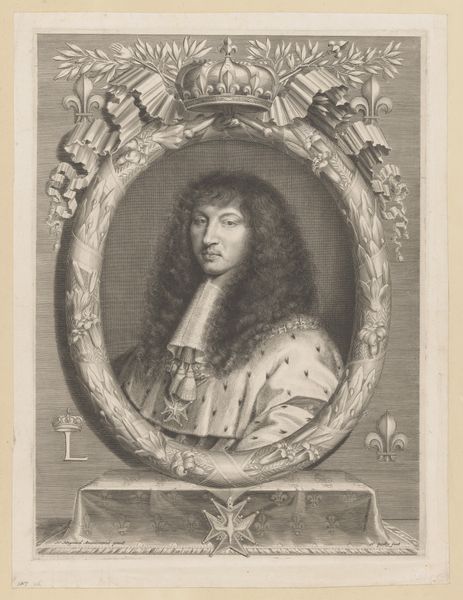
drawing, print, engraving
#
portrait
#
drawing
#
baroque
# print
#
history-painting
#
academic-art
#
engraving
Dimensions: Sheet: 12 1/2 × 9 13/16 in. (31.8 × 24.9 cm)
Copyright: Public Domain
Curator: This engraving from 1661 is Robert Nanteuil’s portrait of Henri-Jules de Bourdon, duc d'Enghien, part of the collection here at the Metropolitan Museum of Art. Editor: What strikes me immediately is the circular framing and the incredible detail in the hair. The light seems to catch every strand. Curator: Nanteuil, of course, was the premier portrait engraver of the French court during the reign of Louis XIV. What interests me is how this portrait engages with concepts of masculinity and power within that context. We see a young man, the Duke, adorned with symbols of nobility, but his presentation subverts traditional notions of male stoicism. Editor: Yes, and Nanteuil has achieved an almost photographic likeness, capturing subtle variations in tone that model the Duke’s face. The meticulous rendering gives a sense of volume and presence despite the print’s inherent flatness. Curator: And it’s also important to consider the engraving within the framework of social hierarchy and political authority. Engravings like these played a vital role in disseminating the image of the aristocracy and reinforcing their dominance. The portrait becomes a form of propaganda, visually asserting the Duke's lineage, status, and divine right to rule. Editor: Propaganda, certainly, but let’s not forget the formal artistry. Look at the composition, how Nanteuil balances the portrait with text around the perimeter. And the textures! From the armor to the velvet cloak. The interplay of these varied elements creates an incredibly appealing visual rhythm. Curator: True. Considering contemporary notions around celebrity culture adds another layer to unpack, too. The circulation of these engravings created a kind of "brand" for the aristocracy and played a crucial role in building what we might now call political capital. Editor: The Duke's gaze is so direct; it’s meant to project an aura of importance, absolutely. But analyzing Nanteuil's command of line and value allows us to really grasp the formal structure and visual strategy within this historical representation. Curator: Indeed. Examining the image beyond mere biographical representation, and situating the subject within their web of social relations helps uncover a more complex understanding. Editor: Agreed. Appreciating Nanteuil’s artistry and the engraving’s broader social significance ultimately enriches our viewing experience.
Comments
No comments
Be the first to comment and join the conversation on the ultimate creative platform.
